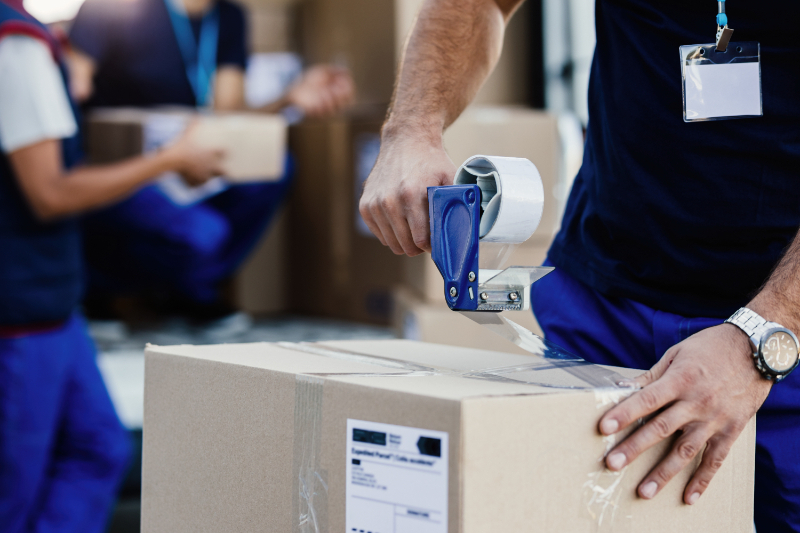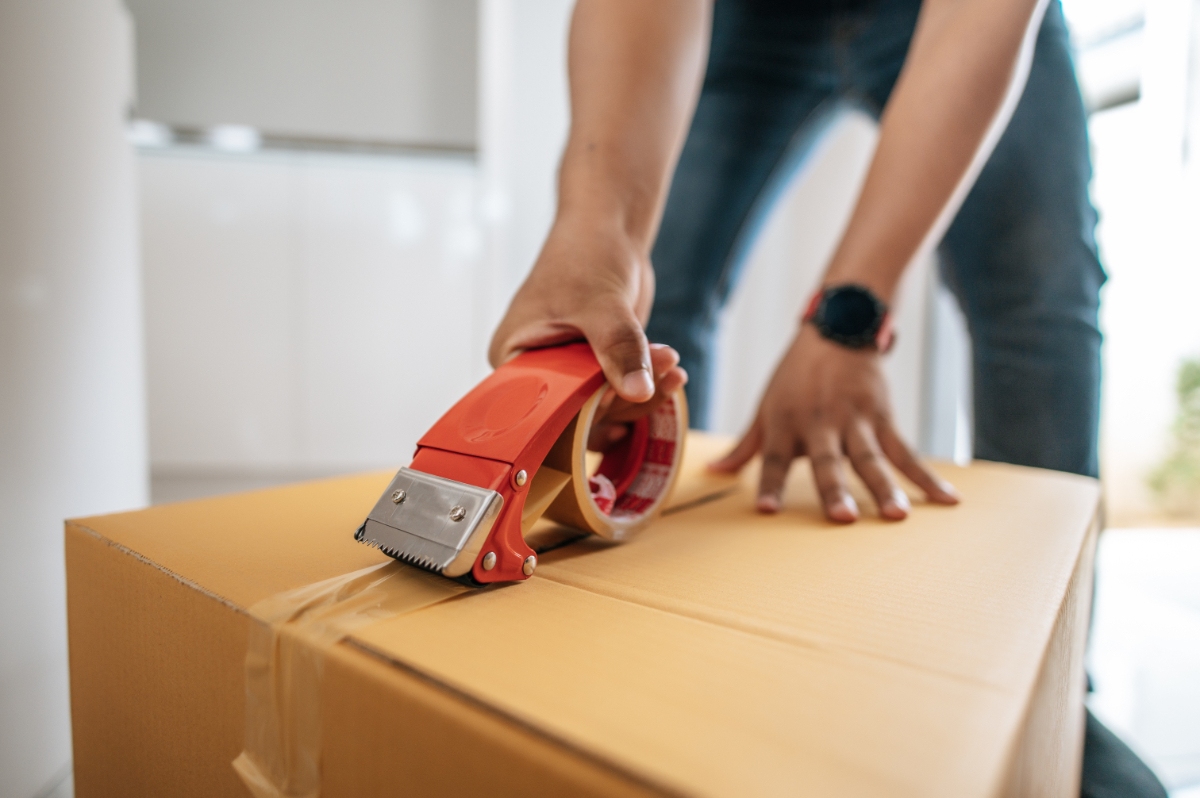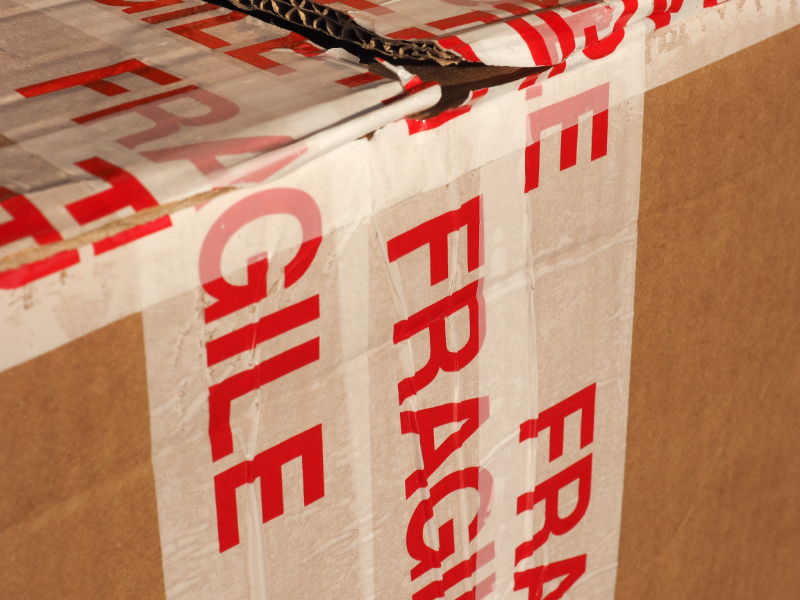We ask: What room should you pack first when moving? Find out the optimal room to start with for a streamlined moving process. Our expert guide offers practical advice on prioritizing rooms, from least-used to most essential, to ensure an efficient and organised move.
Storage Rooms and Spare Room
It's a good idea to consider the rooms used less frequently in your home. That tends to be the storage rooms and spare rooms. These rooms are often filled with items that aren’t needed daily, so starting your packing process here is less disruptive to your daily routine.
Decluttering is an essential part of this initial step. You may find numerous items which are no longer needed. So, it's a good time to figure out what you want to keep and what can be donated, sold or discarded.
This process not only helps in reducing the number of things you need to move but also makes organising your new space easier. Remember to have plenty of boxes at hand. Things like out-of-season clothes or rarely used appliances stored in the attic or basement can be packed away early.
It’s also essential to label these boxes properly to make the unpacking process easier in your new home. Write clear descriptions of the contents on the boxes. For example, if you’re packing kitchen utensils, label the box as "Kitchen Utensils" rather than just "Kitchen." This small step can save you a lot of time and hassle.
Another helpful tip is to create an inventory list. Keep track of what’s in each box. This way, if you need to find something quickly, you can refer to your inventory list rather than opening several boxes. Also, be mindful of packing fragile items properly. Use bubble wrap, packing peanuts, or even old newspapers to cushion these items. This ensures they arrive at your new home intact.
Kitchen and Living Room
After tackling the storage and spare rooms, it's time to turn your attention to the kitchen and the living room. It may seem daunting as these areas typically include many items. However, it doesn't have to be stressful if you approach it right. Begin with items you use less frequently.
For example, dining room artwork, or those special-occasion dishes and appliances. To protect fragile items, use bubble wrap or newspapers, and don't overload boxes. Proper labelling on the boxes can help identify which items need extra care.

In the living room, start with items not used every day like books, ornaments, or framed photos. Use towels or blankets to protect artwork or other fragile items. Marking the boxes as "fragile" and "handle with care" will remind you to take extra caution when moving them. When it comes to larger items such as furniture, ensure you dismantle what you can.
This makes transportation easier and reduces the risk of damage. Use furniture covers or old sheets to protect from scratches and dust. To streamline the process, consider creating an inventory list. This will help you keep track of all your belongings and ensure nothing is lost during the move. You may also download a moving checklist to guide you through each step.
Remember to keep your essentials separate. Items like your kettle, some mugs, a few plates, and an emergency toolkit should be easily accessible. Label this box as "essentials" and keep it in a place where you can quickly find it. Using a methodical approach, like packing room by room, will make the task less overwhelming.
Don't hesitate to ask friends or family for help. Extra hands can make a significant difference. Organising your move efficiently can reduce stress and ensure a smoother transition.

Your Bedroom
Another room to pack early in the moving process is your bedroom. Start with items you don’t need immediately, such as out-of-season clothes and extra linens. Packing these items ahead of time allows you to leave daily wear, essentials, and a set of fresh sheets and towels until the last moment. When it comes to your bedroom, another crucial element to consider is your furniture.
If your furniture can be disassembled, take the time to do it ahead of your moving day. Ensure you secure all fixings safely, so you don’t lose any important screws or bolts. This will make the moving day less stressful, as you won’t have to rush to take apart your furniture on the day itself.
Additionally, don’t forget to protect delicate items such as mirrors or photo frames. You can use bubble wrap or old blankets to wrap them securely. Labelling boxes for your bedroom will also make unpacking easier once you arrive at your new home.
For instance, mark boxes containing bed linens, clothes, and personal items clearly so you can easily find what you need. Another tip is to keep important documents, jewellery, and other valuable items in a separate, easy-to-access box or container. This way, you can keep these items with you during the move, ensuring they don’t get lost or damaged.
Childrens' Bedrooms
Packing the children's rooms can be a bit tricky, especially if you have younger children. Much like other rooms, start with out-of-season clothes, rarely used toys, and books. Ensure you keep some toys and books at hand to keep them occupied.
Keep essentials like school uniforms and everyday items till the last minute. When sorting through toys, consider donating or discarding items that your children have outgrown or no longer play with.
Label boxes clearly with their contents and the room they belong to, making it easier to unpack later. Involving your children in the process can also be an opportunity to teach them organisational skills and responsibility.

As you pack, create a checklist of what goes into each box. This practice will help you keep track of everything and avoid any missing items during the move. It’s also essential to pack a separate box with immediate essentials for the first few days in your new home.
This box might include a change of clothes, toiletries, and a few favourite toys or books to make the transition smoother for your children. For younger children, maintain a routine to keep the disruption to a minimum. Explain the moving process clearly to them, addressing any concerns or questions they might have. This preparation can reduce anxiety and make the move a more positive experience for everyone.
Bathrooms
When preparing for a move, the last room to pack is usually the bathroom. This is because it contains daily essential toiletries, medicines, and other bathroom items that are used right up until the moving day. Start by packing items you don’t use daily, such as extra shampoo bottles, spare razors, and additional towels. This will make the final pack-up less overwhelming.
On the actual moving day, focus only on packing items you absolutely need. These include a toothbrush, toilet paper, and essential medicines. It’s a good idea to keep these must-have items in a separate, clearly marked bag or box so you can easily access them once you move into your new home. If possible, move these essentials yourself rather than packing them in the moving truck to ensure they are immediately available when you arrive.
One critical aspect to consider is checking for any liquids that could potentially leak during the move. Items like shampoo, conditioner, lotions, and mouthwash can cause a mess if they leak. To prevent this, either dispose of any nearly empty containers or pack them in sealable bags. This prevents damage to other items in your moving boxes.
Additionally, pay attention to your medicine cabinet. Dispose of expired or no-longer-needed medications properly, as many places have special guidelines for disposing of pharmaceuticals. For the medicines you do need to take with you, consider packing them in a small, portable case that can be kept with you for the duration of the move.
Make sure they are clearly labelled and easily accessible, particularly if you have daily prescriptions that you can’t miss. Don’t forget small but necessary items like razors, nail clippers, and hairbrushes. These should be packed in a secure, easy-to-find spot. If you have electric items like a hairdryer or electric razor, ensure they are clean and dry before packing them away.
Newtons Removals And Storage Ltd offers professional local, national and international removals for clients in Hinckley, Nuneaton, Bedworth And Coventry, Warwickshire, nationwide and worldwide. We have a long history, with decades of experience, always guaranteeing customer satisfaction. If you're in need of a removals company, contact us today!






